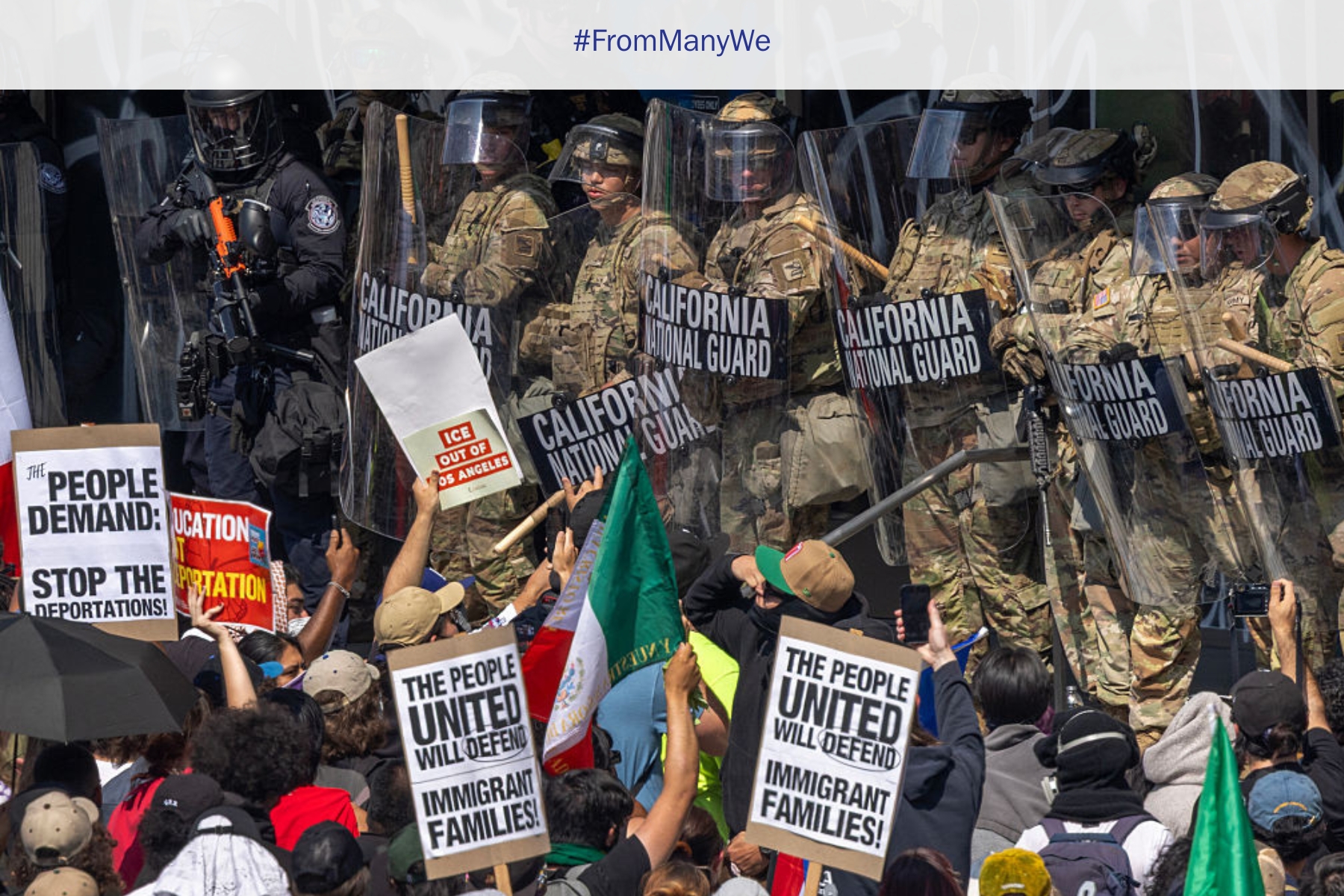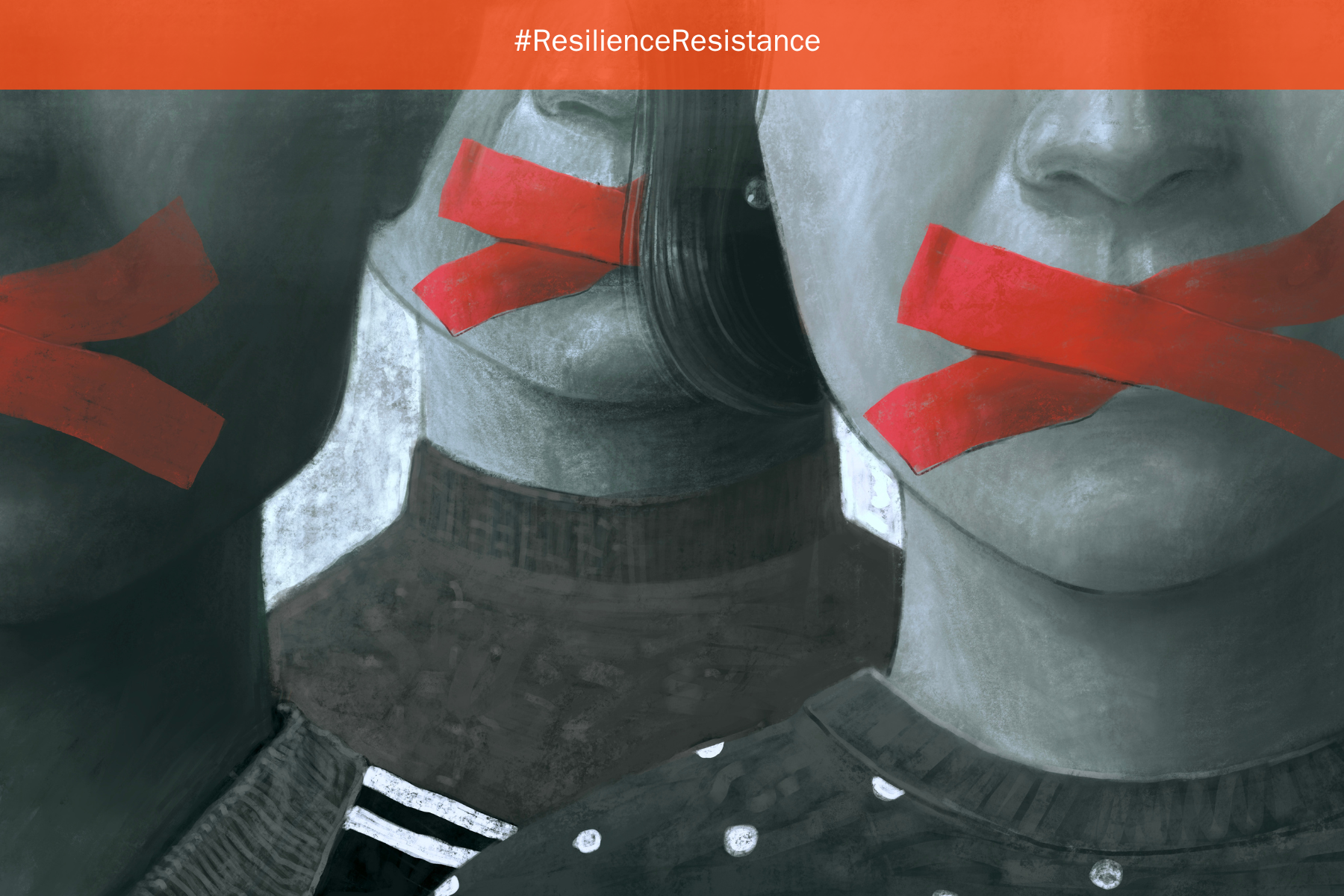Our Duty Is to the Constitution, Not One Person

The second Trump administration has demonstrated a brazen disregard for the rules and norms that have shaped the office of the presidency. From the Department of Government Efficiency (DOGE) decimating the federal civil service to a wide-ranging series of tariffs being arbitrarily levied against our trading partners and now the deployment of troops to US cities in opposition to the wishes of local and state authorities, the past five months have shown that there are no measures to counteract the president’s worst impulses. Throughout the chaos and unpredictability of the current administration, one trend has remained consistent: Donald Trump’s vindictive fixation on his political opponents. With no dissenting voices or guardrails in the White House, the president of the United States has now deployed the military against protestors in Los Angeles.
The Right to Peaceful Protest Is Fundamental
In the American political consciousness, the use of military force against demonstrators is immediately associated with dystopian and authoritarian overreach—few images have resonated with the American public more than the haunting photographs taken in the aftermath of the National Guard’s armed intervention against protesting students at Kent State University in 1970. The right to protest is enshrined in the First Amendment of the Constitution, and demonstrations are considered to be one of the most direct ways individuals can express their political agency. While law enforcement is allowed to maintain a level of crowd control in the interest of public safety, there is an expectation that demonstrations may be held in public places and that protesters will not be denied the right to demonstrate or gather purely because of their opinions and positions. At no point during the Occupy Wall Street protests did the Obama administration commit itself to using military force to suppress demonstrators. And even at the height of the public pushback against the Vietnam War, Richard Nixon was willing to personally speak with protestors at an impromptu meeting at the Lincoln Memorial.
Donald Trump has categorically viewed demonstrators as an obstacle to his political interests for the entirety of his political career. During the 2016 Republican Primary, Trump would punctuate his rallies by drawing direct attention to protesters in the crowd and mocking them as they were thrown out of the venue. During the early months of his presidency, Trump would either downplay the size of the crowds gathered to oppose him or, in the case of the 2018 Women’s March, desperately claim that the demonstrators were in fact his supporters.
Today, the American public is facing the possibility of an increase in the cost of virtually all consumer goods due to the White House’s tariff policy. Additionally, the cascading impacts of these tariffs and DOGE-related layoffs (current estimates place the number of positions eliminated by DOGE at just under 300,000) have undone much of the job growth over the past four years. At the time of writing, signs increasingly point to an impending recession. These dire economic indicators will only intensify the ongoing public outrage over the Trump administration’s policies, including the heavy-handed enforcement of immigration law. Protest and demonstration are the natural responses to these developments.
The Insurrection Act Threat
The Insurrection Act of 1807 grants the president the power to deploy the military within the United States of America. Additionally, the Insurrection Act allows the president to override the purview of a state governor and to federalize the National Guard. As suggested by the name, the purpose of the Insurrection Act is to allow the federal government to respond to an armed rebellion within the United States. Under normal conditions, the president of the United States is prevented from using the military to enforce civilian laws by the 1878 Posse Comitatus Act. However, the Insurrection Act overrules this limitation, meaning that it may only be invoked when local and state governments have failed to address a security challenge.
Over time, the scope of activity covered by the Insurrection Act has expanded to include civil unrest. The Insurrection Act has been invoked several times in American history and has been used to address challenges ranging from insurgency across the Reconstruction-era southern states following the Civil War, labor strikes in the late 1800s, and resistance to desegregation during the Civil Rights Movement. While the president has the power to invoke the Insurrection Act, this decision must not be made lightly due to the implications of deploying the military inside the United States.
Donald Trump has federalized the California National Guard and deployed US Marines to respond to the ongoing demonstrations in Los Angeles. There is a high likelihood that he may invoke the Insurrection Act soon, either due to the current events in California or due to planned widespread protests on June 14, his birthday. When facing the prospect of ordering the military to quell protesters, it can be expected that Trump would face little pushback from his inner circle, as his advisors and appointees were specifically selected for their loyalty. This intervention would likely come in the form of a direct order from the president to the military to fulfill a role in support of law enforcement. The military would execute the president’s instructions as a “lawful but awful” order under a declaration of martial law. Any subsequent orders made by the president in these conditions, such as directing the military to use force to suppress and disperse peaceful civilian protesters, would be at best legally ambiguous, if not outright illegal.
Illegal Orders in the Authoritarian Playbook
Invoking the Insurrection Act would have two goals. The first would be to provide an immediate and disproportionate response to a large-scale demonstration against the Trump administration to project a position of strength for Trump’s base in response to widespread unpopularity. The second goal would be to create a chilling effect for smaller demonstrations across the country and dissuade future protest activity. By invoking the Insurrection Act and instituting martial law in response to domestic political developments, the Trump administration would create a legal gray zone that could extend indefinitely and would open community organizers, elected officials, and members of the press and political establishment to persecution.
The brave men and women who swore an oath to protect the Constitution would be forced to parse between lawful, legally ambiguous, and flagrantly illegal orders. The military is trained to disobey illegal orders and should refuse to execute obviously illegal orders. The trial of Lieutenant William Calley following the My Lai massacre established that simply following orders does not provide a legal defense for violations of the rules of engagement; illegal orders to kill given by a superior officer are still murder. Nevertheless, the risks of military force being applied to law-abiding citizens by the current administration are very real. Such an action would likely precipitate massive public backlash while opening a new and dangerous threat to American democracy.
A dress rehearsal for this situation has already happened. In response to the nationwide protests following the death of George Floyd, Trump felt that the demonstrations made him look “weak” and asked Defense Secretary Mark Esper, “Can’t you just shoot them?” The invoking of the Insurrection Act was discussed on the morning of a photo-op at St. John’s Church on June 1, 2020. Trump reportedly told a conference call of governors, “You have to dominate [protestors], if you don’t dominate you’re wasting your time.” According to a senior Pentagon official, Trump requested that 10,000 troops be deployed to Washington, DC, before eventually settling for an increase in federal agents instead. At the time, cooler heads prevailed, and Trump’s advisors were able to walk him back from invoking the Insurrection Act. Today, there are no such guardrails. While Republican advisors in the first Trump administration acted as the voice of reason, individuals like current White House deputy chief of staff Stephen Miller remain fixated on the spectacle of overwhelming shows of violence.
Our Loyalty Is to the Constitution
To any active-duty service members reading this, I need not remind you of your obligations to disobey illegal orders and follow your oath to the Constitution. If you receive orders from President Trump that are unclear in their legality, you are obligated not to simply obey your superior but instead display moral courage and question those dubious orders. As members of the military, our duty is to defend the Constitution from all enemies, foreign and domestic, not to guard the interests and ego of one man. Were it not for the de-escalatory steps taken in 2020, Donald Trump would have given you an order that would forever alter civilian-military relations in America. The Insurrection Act was nearly invoked in response to peaceful protests in June 2020, yet was never considered when Washington, DC, was faced with the January 6 insurrection six months later. This administration has no consideration for the longevity of American democracy and is fixated entirely on the interests of Donald Trump. Should the time come when you are commanded to undertake such a task, remember your training and know that you are not alone.
Alexander Vindman is a retired US Army lieutenant colonel and the former director for European Affairs on the White House’s National Security Council. Vindman leads the national security think tank Institute for Informed American Leadership and is an executive board member for the Renew Democracy Initiative, a senior fellow at the Kettering Foundation, and a senior advisor to VoteVets. His best-selling memoir is titled Here, Right Matters and his best-selling new history is titled The Folly of Realism: How the West Deceived Itself About Russia and Betrayed Ukraine.
From Many, We is a Charles F. Kettering Foundation blog series that highlights the insights of thought leaders dedicated to the idea of inclusive democracy. Queries may be directed to fmw@kettering.org.
The views and opinions expressed by contributors to our digital communications are made independent of their affiliation with the Charles F. Kettering Foundation and without the foundation’s warranty of accuracy, authenticity, or completeness. Such statements do not reflect the views and opinions of the foundation which hereby disclaims liability to any party for direct, indirect, implied, punitive, special, incidental, or other consequential damages that may arise in connection with statements made by a contributor during their association with the foundation or independently.








